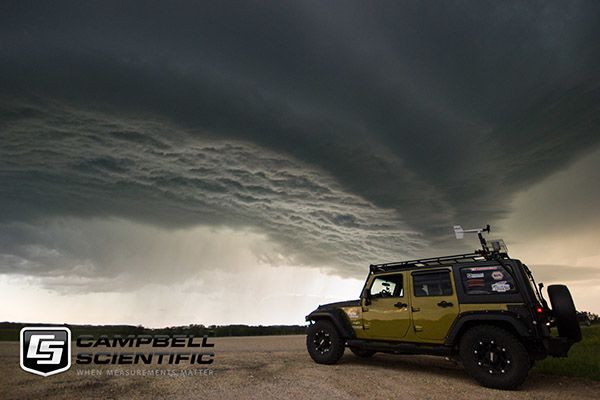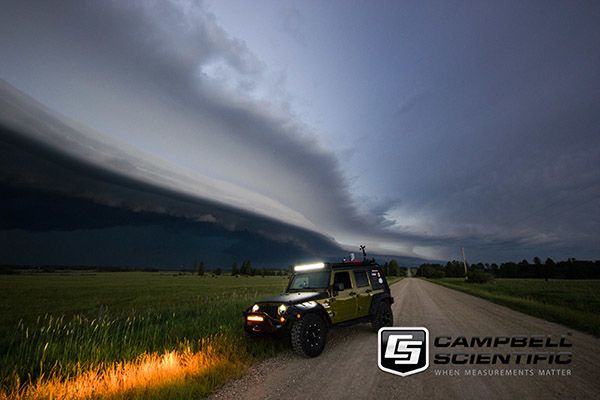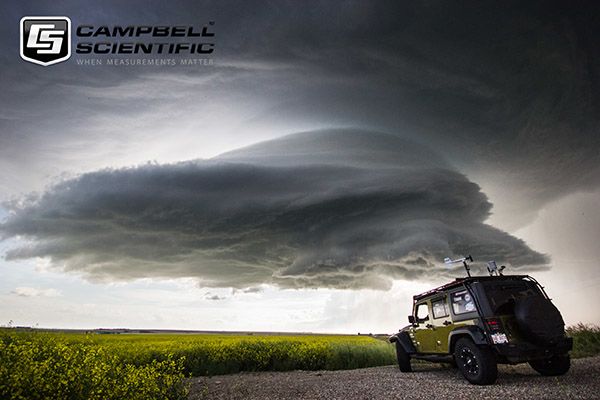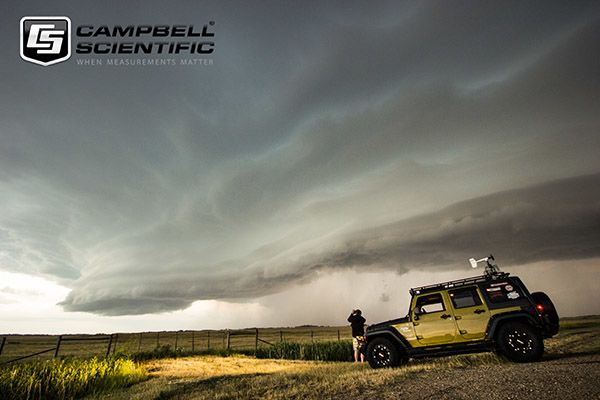
This summer, we sponsored the Prairie Storm Chasers (PSC) to enhance their ability to collect data when chasing storms. The partnership has provided us with a great opportunity to engage with our local community.
Last spring, PSC visited our office where Ian Milne, one of our Key Account Managers, outfitted the PSC’s vehicle, the Predator, with weather monitoring gear. Parameters measured include temperature, relative humidity, dew point, barometric pressure, wind speed and direction, and GPS location. Ian also set up Loggerlink on their smartphones and provided necessary training on the equipment.
Throughout the summer, PSC has been able to view weather parameters on location and in real-time, as well as collect data to archive. Not to mention, they’ve been posting weather data and photos of their chases via Twitter (@PrairieChasers) for the public to follow.

The season is now nearing its end, so we followed up with Braydon Morisseau of PSC to find out how data collection helped them in the chase.
Why did PSC want to measure and collect meteorological data while chasing storms?
“[We] wanted to collect data while chasing storms to better understand the atmospheric environment in place prior to storm initiation. We also used the station to report parameters during a chase to Environment Canada.”.
Did the data help you in the storm chase? If so, how?
“Having access to live data while chasing helped us know elements of the atmosphere that both aided in storm development phase as well as the mature storm stage.”
What parameters have you found most useful while chasing storms?
“All the data we were able to record was useful while chasing this season. Temperature/dew point was especially helpful in knowing the energy available for storms and locating the dryline. Wind measurement was also very helpful for measuring straight line winds in severe weather.”
What have you found most interesting about the data collected?
“The fluctuations in dew point over certain terrain. We are actually able to find moisture pooling in lower areas topographically because moist air is heavier than dry air, which is something you couldn't really [determine] with a static weather station.”
What will you do with the historical data collected? Any plans to use it or compile it for anything in the future?
“This year was a test for the system and how valuable it would be prior to, and during a chase. There is no question there is value to collecting data points in a mobile package. In the future, we hope to extrapolate more of the data especially during very interesting days on the prairies.”
Do you have any plans for data collection in the future?
“We hope to continue our partnership with Campbell Scientific in the future. We believe our brands go hand in hand when it comes to severe weather on the prairies and Campbell Scientific provides the highest quality in weather instrumentation for collecting data.”
How did the equipment hold up in the stormy weather?
“We were hesitant at first, but instruments provided by Campbell Scientific stood up against some of the harshest elements on the Canadian Prairies. Among some of the storms chased this season, the instruments withstood up to toonie (that’s a Canadian $2 coin for those who don’t know) and golfball sized hail, 150+km/hr winds, and torrential rain.”



